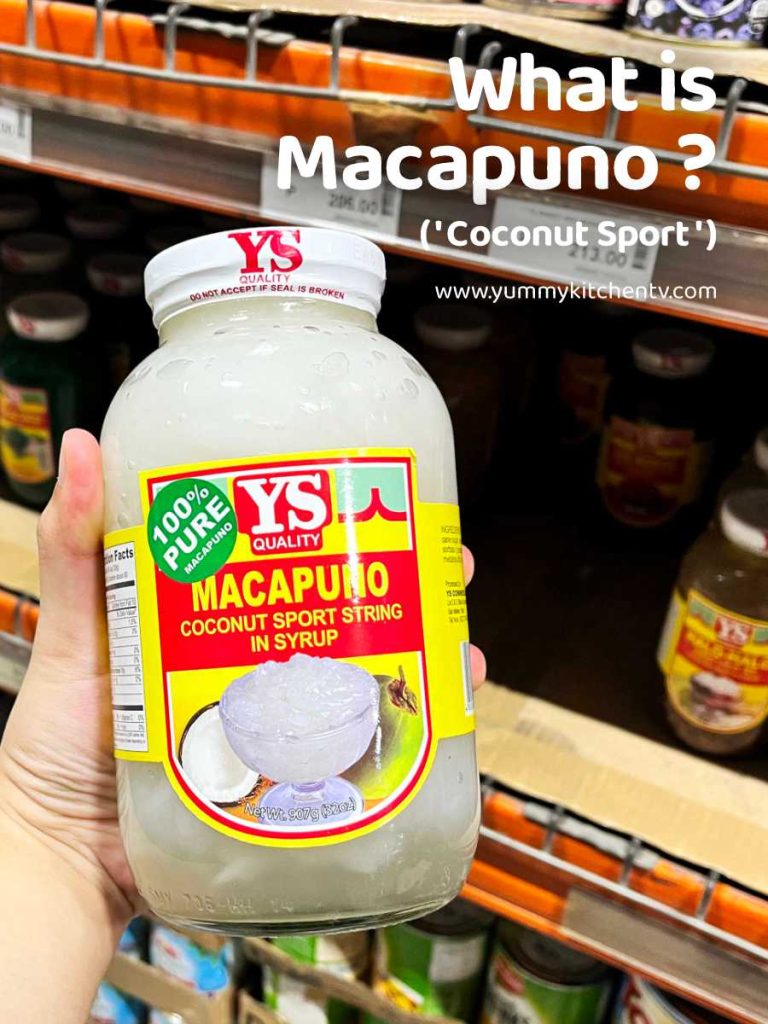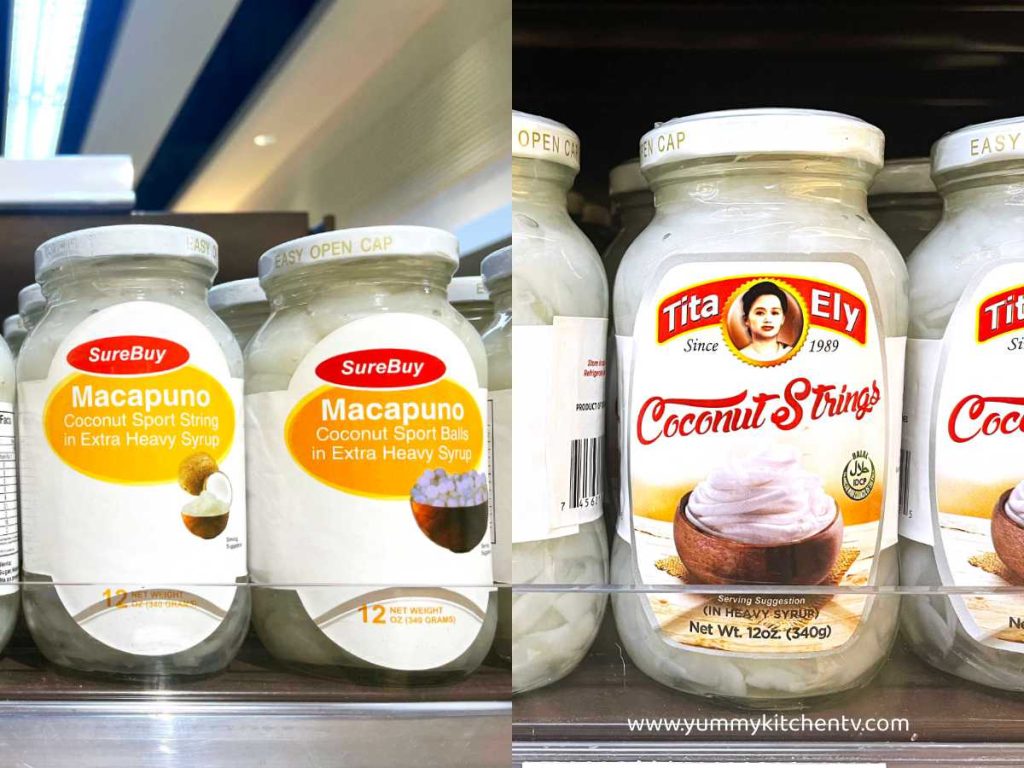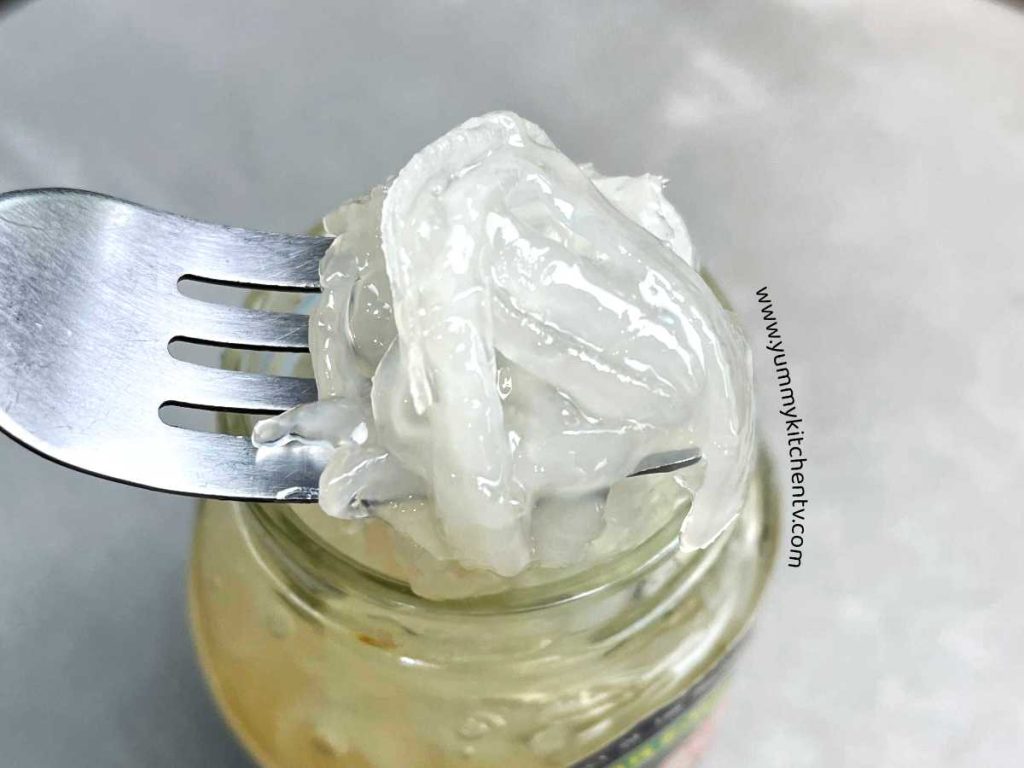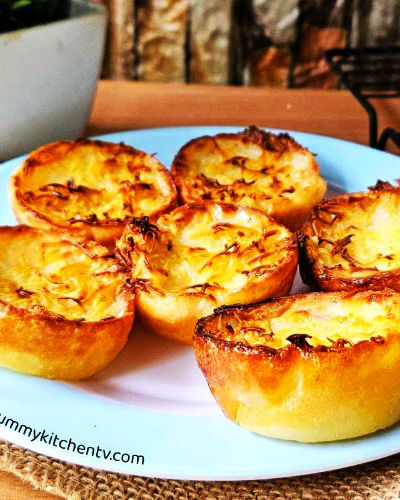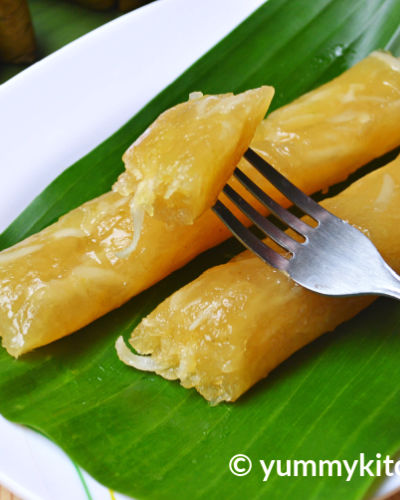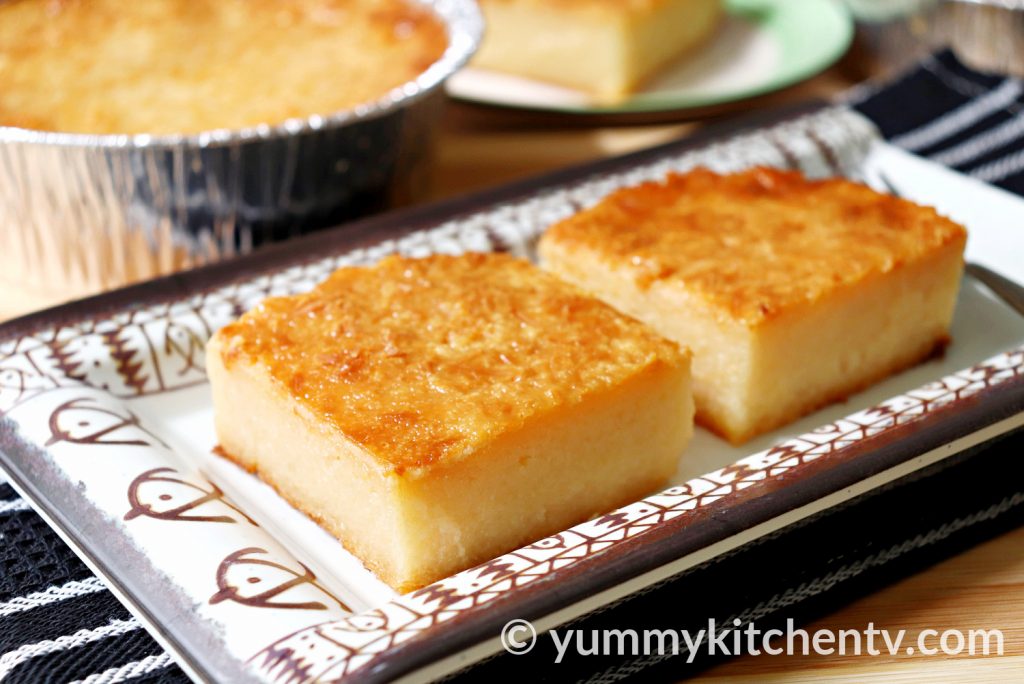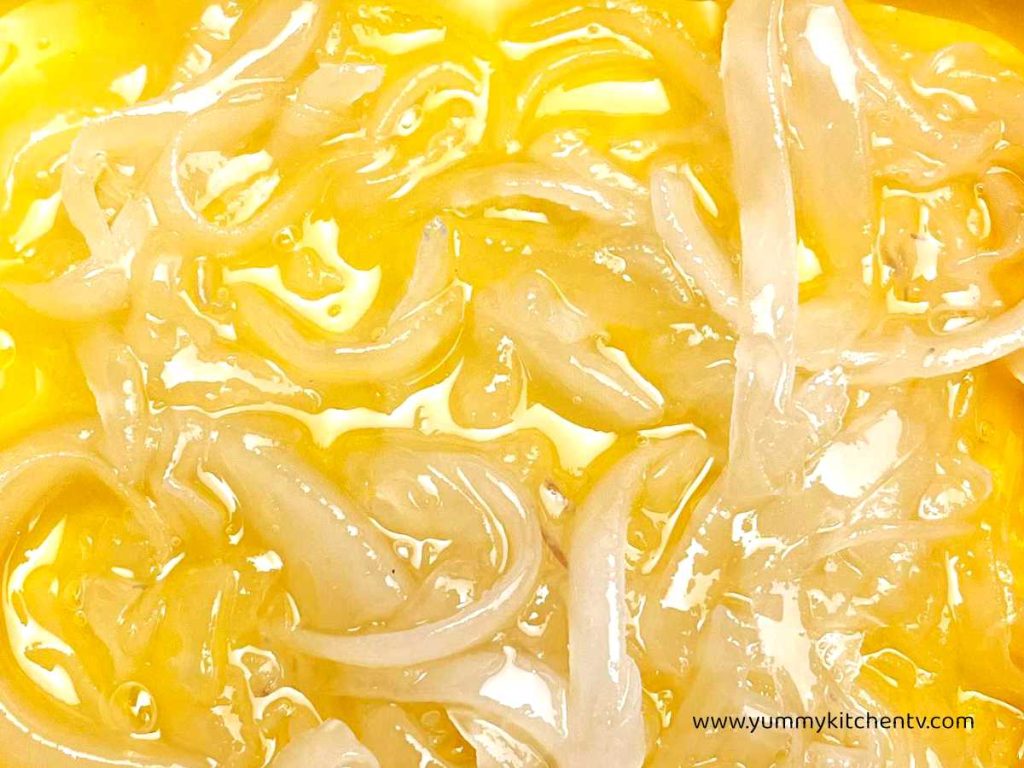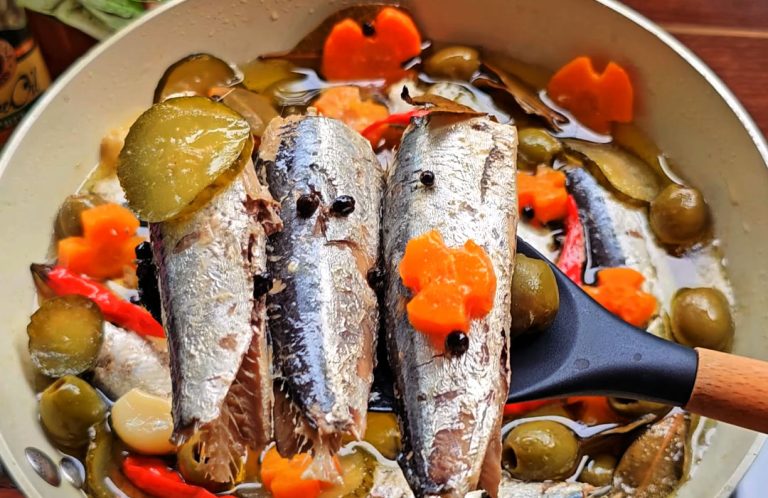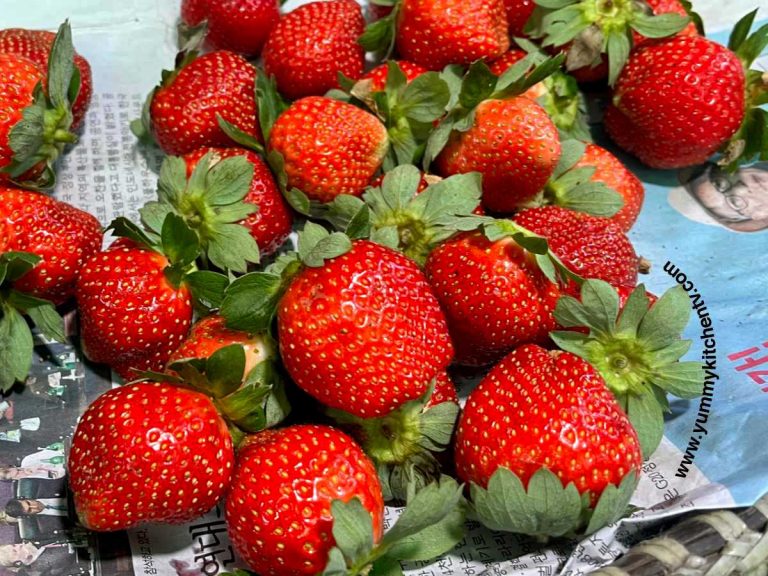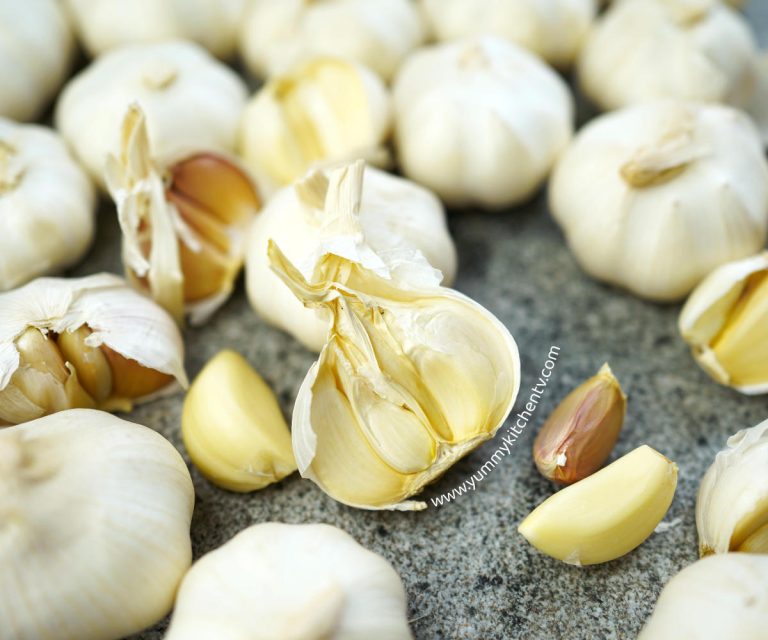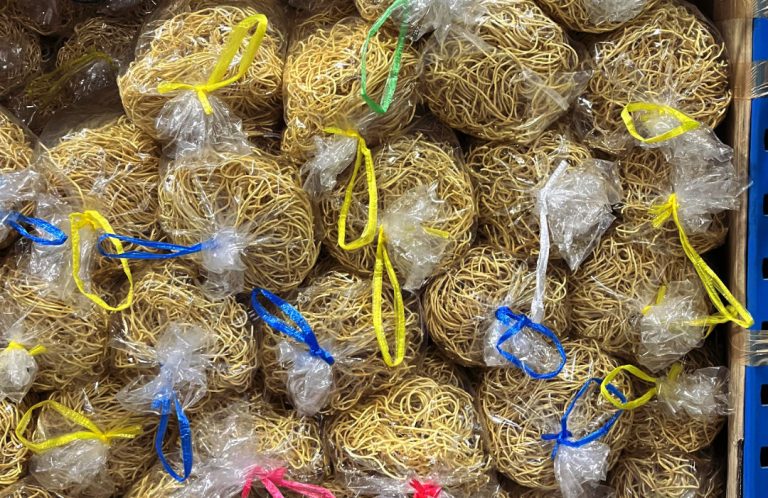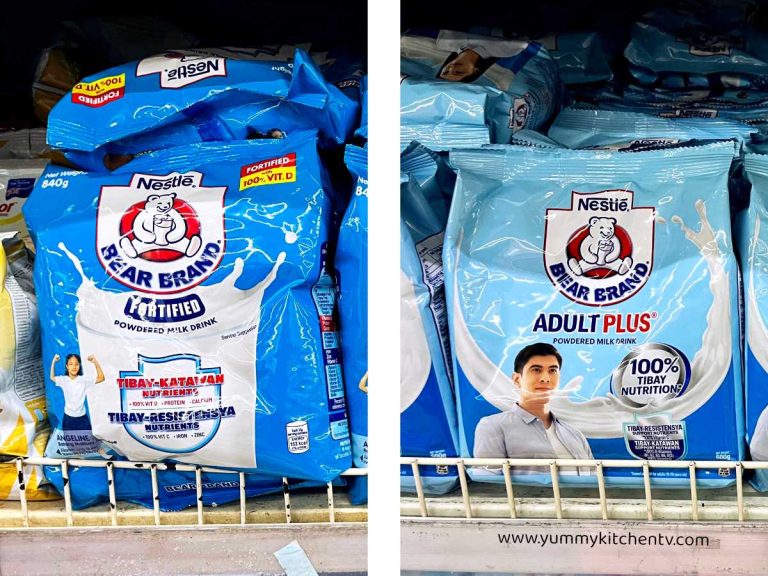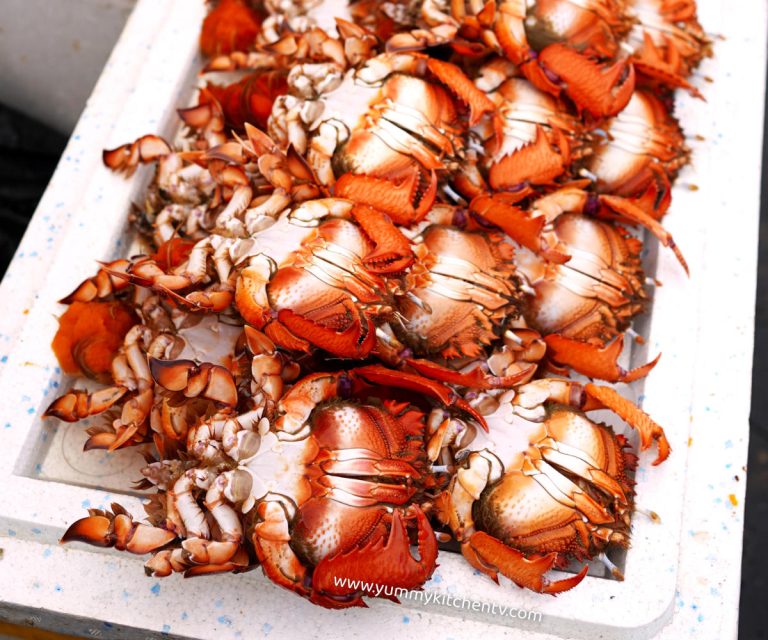What is Macapuno (Coconut sport)
Macapuno or in English ‘Coconut sport’ is a result coming from the abnormal development in the native or dwarf coconut tree. It creates an opaque, thick, soft, jelly-like meat around the whole cavity of the coconut. A delicacy found in the Philippines, sliced into strips and placed in a bottle of sugary water. These are often found in desserts like cake toppings and fillings, halo-halo, ice cream and many more.
A short Introduction
The Macapuno, also spelled ‘Makapuno’, is called ‘Coconut sport’ in English. This ingredient comes from an occurring abnormal development in the endosperm of the coconut. Resulting in a soft, gooey or creamy-looking opaque jelly, filling the entire cavity of the coconut seeds, leaving no coconut water left. It was in the 1960’s that the ‘Plant Tissue Culture’ or ‘Embryo Rescue’ technology by Emerita V. De Guzman became more developed. Making the coconut sport become commercially cultivated in the Philippines. It then became an important crop in many Southeast Asian and Pacific Island coconut producing areas.
The name ‘Makapuo’ is actually a phenotype, meaning “feeling full”, referencing the endosperm around the coconut cavity looking full or filled with the creamy meat, instead of the regular coconut that has a thin layer of meat, filled with a good amount of juices. In Indonesia, this is called ‘Kelapa Puan’ meaning ‘female coconut’, as this has a softer textured flesh compared to the usual coconut. This is also called ‘Kepala Kopyor’ meaning ‘scrambled’ since the meat looks similar to a scrambled egg visually. This ingredient also has a lot of names, all coming from how it’s described visually, from Cambodia ‘dong kathi’, in Pilynesia ‘Pia’, India ‘thairu tengai’, Thailand ‘maprao kathi’, Papua New Guinea ‘niu garuk’, and in Vietnam ‘dùra sáp’.
It is quite impossible to be able to distinguish normal coconuts with macapuno filled coconuts without breaking it in half. While the normal flesh has α-D galactomannan, one of the enzymes not active in the macapuno, this is needed to nourish the embryo, without this, it creates a this collapsed embryo, creating the lumpy looking meat inside the macapuno coconut seed, and also creates more amino acids and a higher sucrose production, making it sweeter than the normal young coconut. This also means that pure macapuno trees are harder to find in the wild, most of what is in production or are cultivated are laboratory made palm trees that are cross-pollinated or self-pollinated to yield a tree that only bears macapuno seeds.
What are some of its Characteristics ?
- Texture : This interesting ingredient is distinguished by its soft, gel-like flesh that feels chewy and gooey.
- Flavor: while not as sweet as regular coconut. It has a nice delicate flavor, subtly sweet and aromatic like coconut oil.
- Uses : A popular ingredient used in Filipino desserts like the examples below.
- Macapuno Strings Substitute : You can use young coconut that’s been shredded or sweetened flaked coconuts with water ( mix 1 & 1/2 cup of the sweetened coconut with 1/2 cup of water ). You can also replace these with other preserves or jam for a fruitier take.
How was it found?
This all started in Tangerang, Indonesia and in Laguna, Philippines, when a palm tree that bore both young coconut and macapuno coconut seeds were found in 1931, reported by an American botanist Edwin Copeland, who worked for the Philippine’s Department of Agriculture. It became a rare, expensive delicacy. A sweet delicate ingredient you can find in many traditional and more modern desserts. The macapuno flavor is described as a sweetened coconut lump or stripes, with a creamy firm, almost chewy texture. A popular choice for those who love coconuts, but want them naturally sweeter and thicker in texture. A popular use of this coconut sport is the Ube Macapuno Cake in Goldilocks or the Ube Macapuno Cake in Red Ribbon, both are ube flavored chiffon cakes layered with whipped cream cheese and macapuno, topped with more cream and macapuno on the outside. You can also find these in halo-halo, another wonderfully colorful Filipino dessert, pastillas, or in fruit preserves. They are also added in Indonesian cuisine like ‘kelapa puan / kopyor’ a coconut dessert drink. Found in Vietnam, drank as a refreshing ‘milk drink’ or smoothie topped with toasted peanuts. Macapuno is a delicacy that more and more people are getting to know and love.
Macapuno tree vs Coconut tree
Both grow within the same structured tree. Almost one in the same, save for the fact that they have different names, and that the only way to know which one is the normal young coconut and macapuno is once it’s harvest season, once you crack it open, and find if it’s filled with normal thinley lined coconut meat (young coconut) or a chunky fleshy coconut meat (macapuno). Though some also shake the coconut shell to find if the meat sounds and feels detached, to know it is the macapuno fruit.
The Difference Between Buko and Niyog
is that buko is the Tagalog term for a young green coconut, characterized by it’s tender, almost jelly-like textured meat and refreshing coconut water. This is often eaten as a snack, as a filling for pies, or as a drink. While niyog is what many refer tit he browned coconut with a hard shell and firm meat. This is more so used by grating the meat and extracting ( using a cheese cloth, a sieve, or hands ) this with or without water to make coconut milk or cream. Used to make desiccated coconut, in staple dishes like ginataan and other commercial uses.
How to grow a Macapuno Tree ?
Growing a Macapuno tree is no easy endeavor. It requires a special embryo culture process since the seeds cannot be germinated through traditional planting. The embryo is cultured in a lab to create a “Pure Macapuno Seeding”. This is important as the seeds are sterile and the abnormal endosperm cannot support germination. Lab grown seedlings produce pure macapuno palm trees that can yield around 75-100% macapuno nuts. Another important requirement is enough loamy soil, humid weather, and a warm sunny spot to grow this tree.
- Once the seedling is ready, plant these in a well-draining loamy soil at a sunny and humid location. Warm weather is the perfect condition for coconut palms. Though you can also place the seedling in a pot before placing it directly on the ground.
- Water the planted seedling often. You want to keep the soil moist but not waterlogged.
- While coconut palms grow moderately fast. It can take around 15 to 20 years for it to yield any fruit.
- A properly propagated palm tree can produce nearly 100% of macapuno nuts.
Macapuno Benefits
A distinctive byproduct of the coconut. Delicious, sweet, and easy to add into desserts and beverages, making them naturally sweet. But is it healthy to consume? Here are some examples on why you should give it a try?
- It yields ‘Galactomannan’, a water soluble antigen used in many pharmaceuticals, commercial food, and other industries as a stabilizer. This is also the reason why makapuno visually looks like it forms a gelatinous, soft and fluffy flesh.
- Like most coconut products, these are also filled with protein and nutrients that help with the following:
- Helps create more red blood cells.
- Rich in antioxidants, protects the cells from damage that may cause cancer, and other chronic diseases.
- Great for bone health, since it does have antioxidant properties. It fends off bone loss that comes from hormonal charges, and may even prevent osteoporosis.
- Are used for its antibacterial effects, in some studies, coconut oil is great for blocking and inhibiting growth of bacteria that may cause infections, especially foodborne diseases.
- Promotes blood sugar control, being a coconut byproduct, these are high in fiber and good fat that is good for metabolism and losing weight.
Filipino Macapuno recipes:
The Macapuno coconut is a fan-favorite delicacy in the Philippines. Mostly found in grocery stores, preserved in bottles with sugary syrup. Best eaten in or on dishes like:
to Beat the Summer Heat
- Macapuno balls recipe – How to make Macapuno balls? This sweet and easy simple candy-snack that just needs a few minutes to make, with only 5 ingredients.
- Other popular Macapuno souvenirs ( Macapuno Pasalubong ) include : Macapuno tart and Macapuno ice cream. The smmery treat you can actually make at home. Made with only macapuno as a base, or coconut cream or milk as the base filled with chunks or strips of makapuno to add to the sweetness and taste. The best summer treat for kids and adults alike.
- Try using it as a filling to make Ube Macapuno cake, from the more popular Ube Cake ala Red Ribbon, or try out the Ube Condensed Milk cake, or the No Oven Ube cake, fill it up with cream and makapuno, and you’re sure to have a great party.
- Cassava cake with macapuno – You can mix in macapuno into the cassava batter or use this as a topping. This makes it sweeter and a bit healthier with macapuno instead of loads of sugar. Creating a deliciously creamy texture with a slight sweet and warm coconut taste you are sure to love!
Where to buy Macapuno in Manila ? You can buy these in almost any big or small grocery stores. You might even be able to find them in some convenience stores almost always beside other halo-halo ingredients like kaong, nata de coco, beans, and other colorful Filipino jellies. If you are outside the Philippines you can find these in the dessert aisle or Asian aisle of most international grocery stores. Another good choice are online stores. Just make sure to choose a brand you like or is well known like “Florence”, “Buenas”, “Tita Ely”, or any brand you’ve already tried or has been recommended to you.


